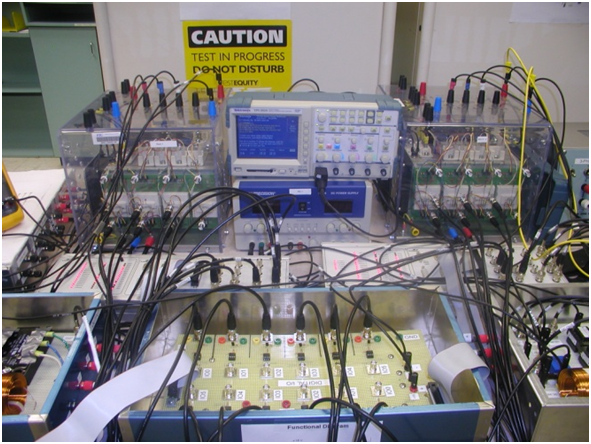Parallel connection of multi-renewable energy systems is one useful method for solving the high power requirements. These systems could be a combination of different energy sources (e.g. wind, photovoltaic, etc), or a single type of source, like in wind farms. Our scope of work was focusing on the same kind of renewable energy source, considering multi-wind generators connected to the common DC-bus system through multi-parallel power converters. Connecting modular unit systems in parallel is an efficient and reliable method of increasing the power ratings of the modular units limited by the voltage and current limits of semiconductor power switches. For this reason, parallel converters and inverters have been a viable alternative method of satisfying system power requirements beyond the capacity of the largest modular unit system. Parallel converters and/or inverters are also used for reducing harmonics of PWM switching frequency, and increasing available output voltage and frequency. Nonetheless, in parallel connection, the technique of load sharing among multi modules is still evolving to date. For example, in PWM converters connected in parallel, it may not be easy to share the load current among converters while maintaining the desired output voltage.
In this project, a performance analysis of a dc-bus voltage regulation technique for parallel wind-based synchronous generators was presented. This technique was developed based on a master- slave voltage oriented control (VOC) algorithm for PWM converters. The proposed technique gives the ability to interconnect multi wind converter units sharing one dc- bus. Figure 1 shows two SPWM converters sharing single load. It is assumed that the converters are rectifying the output voltage of two wind generator systems. It is not convenient to let each unit controlling the DC link voltage separately without any information from the other units. A discrepancy could happen between the controllers. The Master-Slave scheme can solve this problem. One converter unit is selected to be a Master whereas the others are treated as slaves. Each of the slave unit has a self governing system, i.e., it has its inner current control feedback loop. Only the master unit has the outer DC voltage control feedback loop giving the reference current to the entire slave units. By setting〖 i〗_q^r=0, the unity power factor operation is achieved. The other is the d-current controller with reference i_d^r set by the outer DC voltage controller and decides the active power flow between the wind generator and the DC link.Simulation results for different disturbance conditions were carried out to validate this proposed control algorithm.
The developed technique is also implemented in a laboratory setup which includes two synchronous generators (250 W, 2.2 kW), each driven by a variable speed prime mover (VSPM) to emulate a wind turbine behavior, two 3-phase PWM based converters, three-phase line inductors connected between wind generators and converters, variable resistive DC-load, and a digital signal processor (DSP TMS320F240). The experimental results confirm the validity of the presented technique.





